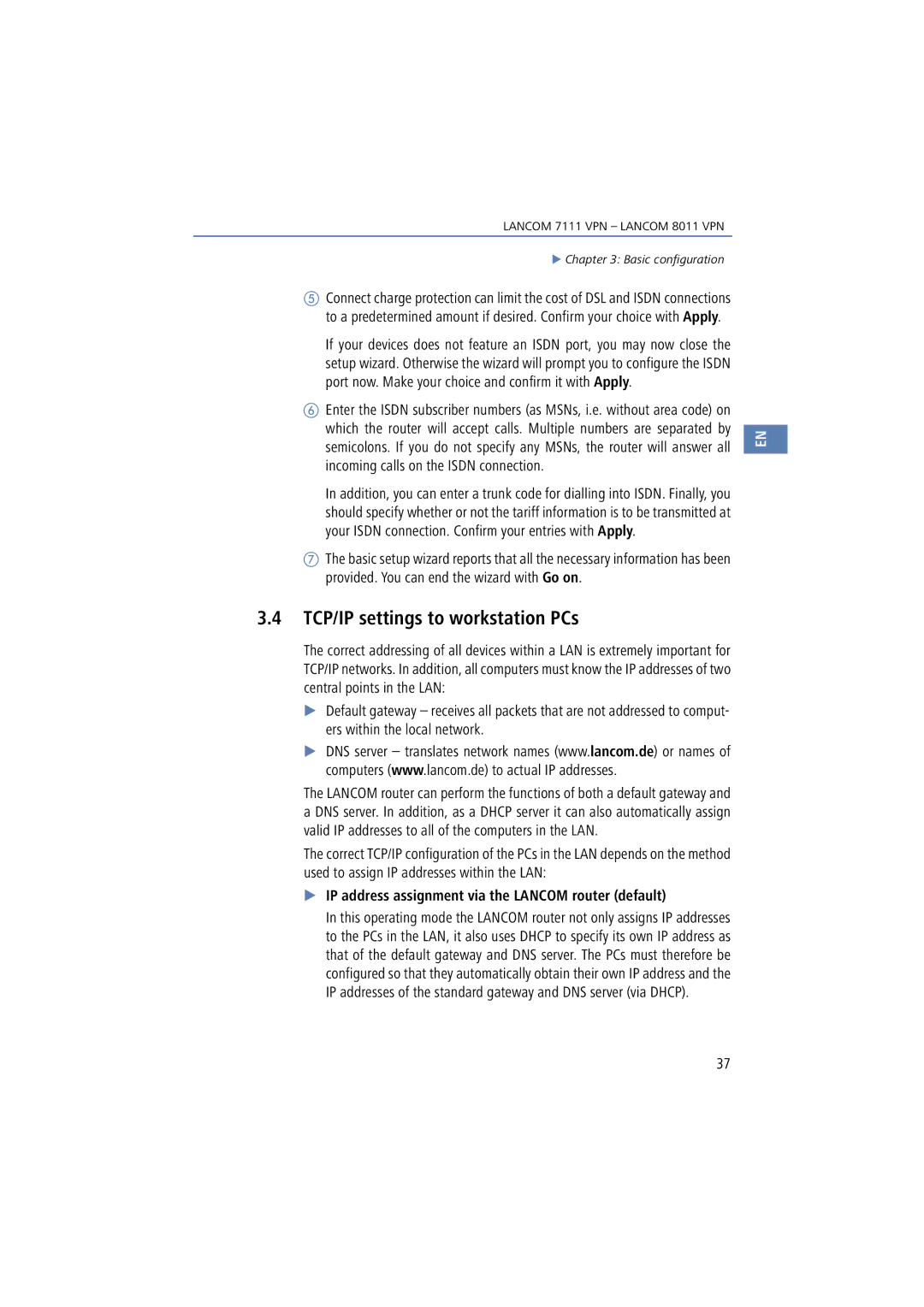
LANCOM 7111 VPN – LANCOM 8011 VPN
Chapter 3: Basic configuration
Connect charge protection can limit the cost of DSL and ISDN connections to a predetermined amount if desired. Confirm your choice with Apply.
If your devices does not feature an ISDN port, you may now close the setup wizard. Otherwise the wizard will prompt you to configure the ISDN port now. Make your choice and confirm it with Apply.
Enter the ISDN subscriber numbers (as MSNs, i.e. without area code) on which the router will accept calls. Multiple numbers are separated by semicolons. If you do not specify any MSNs, the router will answer all incoming calls on the ISDN connection.
In addition, you can enter a trunk code for dialling into ISDN. Finally, you should specify whether or not the tariff information is to be transmitted at your ISDN connection. Confirm your entries with Apply.
The basic setup wizard reports that all the necessary information has been provided. You can end the wizard with Go on.
3.4TCP/IP settings to workstation PCs
The correct addressing of all devices within a LAN is extremely important for TCP/IP networks. In addition, all computers must know the IP addresses of two central points in the LAN:
Default gateway – receives all packets that are not addressed to comput- ers within the local network.
DNS server – translates network names (www.lancom.de) or names of computers (www.lancom.de) to actual IP addresses.
The LANCOM router can perform the functions of both a default gateway and a DNS server. In addition, as a DHCP server it can also automatically assign valid IP addresses to all of the computers in the LAN.
The correct TCP/IP configuration of the PCs in the LAN depends on the method used to assign IP addresses within the LAN:
IP address assignment via the LANCOM router (default)
In this operating mode the LANCOM router not only assigns IP addresses to the PCs in the LAN, it also uses DHCP to specify its own IP address as that of the default gateway and DNS server. The PCs must therefore be configured so that they automatically obtain their own IP address and the IP addresses of the standard gateway and DNS server (via DHCP).
EN
37
